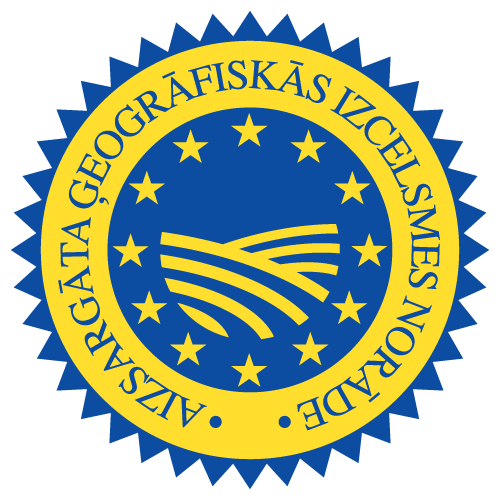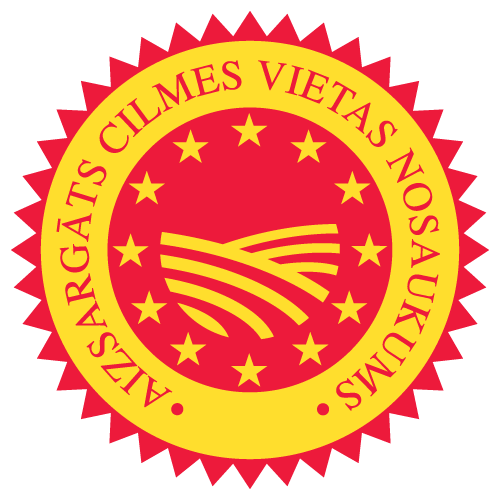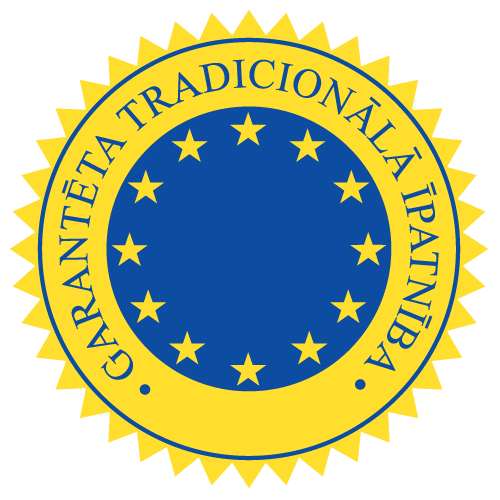Carnikava lamprey
EUROPEAN RIVER LAMPREY
The river lamprey is slim, approx. 50 centimeters (19.7 in) long with a scaleless body and a mouth that resembles a suction cup. According to the latest taxonomical information, the river lamprey is a part of the Agnatha (‘jawless’) superclass. Lines of 7 openings – gill slits – are found on both sides of the body. Lampreys do not possess a stomach or chest fins, and their weight can reach up to 250 grams (8.8 oz). The back and the upper sides of a lamprey can be dark blue-green, blue-gray or green-brown, but the lower side and the belly – grayish, golden or white. A cartilage – the notochord – replaces the spine and is covered by connective tissue. The lamprey attaches itself to fish with its funnel-like sucking mouth, bores into the skin of the prey using its teeth (plates of keratin). Then it injects a special secretion into the wound, which prevents blood clotting and makes it easier for the lamprey to suck out internal organs and muscles. Lamprey larvae (sometimes called ņurņiki) live burrowed into the riverbed, and spend an average of three years in the river. The appearance of the larvae is very different from adult lampreys, so much so, that until the mid-19th century they were considered to be a different species. When the ņurņiki have grown 8 to 15 cm (3.1 - 5.9 in) long, they migrate to the sea. Lampreys can reach speeds up to 13 kilometers (8 mi) per 24 hours, and studies have recorded migration distances up to 250 km (155 mi). Lampreys spawn in rivers from May to June in depths of approx. 0,2 – 1,5 meters (7.9 - 59 in). Males create nests (redds), which the females deepen and release eggs into. Every female breeds with from one to six males, and about two weeks later the adults die.
EUROPEAN UNION PROTECTED GEOGRAPHICAL INDICATION LABEL
The production of quality food products under the framework of the Protected Designation of Origin (PDO), Protected Geographical Indication (PGI) and the Traditional Speciality Guaranteed (TSG) schemes is widespread in European Union states, especially Italy, Spain and France. The main goals of the schemes are: protection of authentic product names from misuse, informing consumers about the geographic origin of products and traditions of production, promotion of diverse production, boosting the market competitiveness of products with special characteristics in comparison with similar products.
In order to register a product as a member of one of the schemes, criteria outlined in legal acts of Latvia and the EU must be met. The recognition process takes time. There are approximately 3000 EU PGI and PDO products in total. After registration, the recipe of the products is published in the official gazette of the EU and become available to everyone.



For a food product to be eligible for the Protected geographical indication (PGI) label, it has to be characteristic to only this region and at least one of the stages of its production takes place in the specified region. For example, when Carnikava lampreys was submitted to apply for the label, the manufacturers had to submit evidence that the product isn’t made anywhere else in the world, or, if it is – that the quality, reputation and other characteristics are linked with Carnikava. In addition, one of the production stages must be organized in Carnikava, e.g. the catching of lampreys.
Products are eligible for the Protected designation of origin (PDO) label, if their entire production process – from sourcing of raw materials to the finished product – happens only in the specified area. It must also possess qualities or traits that originated from the environment, characteristic to the area. Examples include Parma ham from Parma, Feta cheese from Feta and Roquefort cheese from Roquefort.
The Traditional speciality guaranteed (TSG) label can be applied to products which have been traditionally used in an area with proof of traditions being passed from one generation to another for at least 30 years. Only forty products in the EU have received the label, with one the most notable examples being Mozzarella cheese.
CARNIKAVA LAMPREYS PGI
Freshly cooked lampreys in jelly from Carnikava can easily be spotted by shoppers due to the PGI label. The Carnikava lampreys PGI added to the European Union register of Protected geographical indications in February 2015 – thus the term applies to fresh and processed lampreys from Carnikava Municipality, fished from August 1st to February 1st with fish-baskets (creels) in the Gauja River by its mouth at the sea and if processed according to guidelines. Thus the label not only protects the Carnikava lampreys brand, but also notes the quality and signature taste of the product and notes the skills and experience of Carnikavans that has passed through generations since the 17th century.



